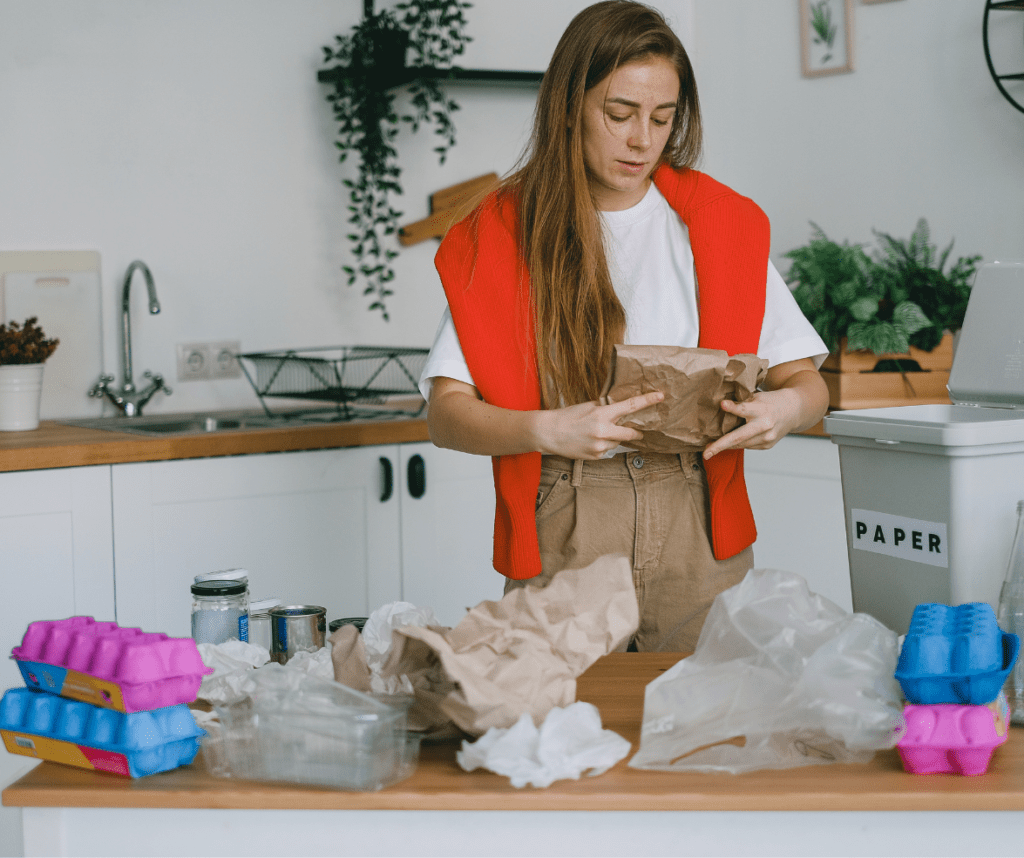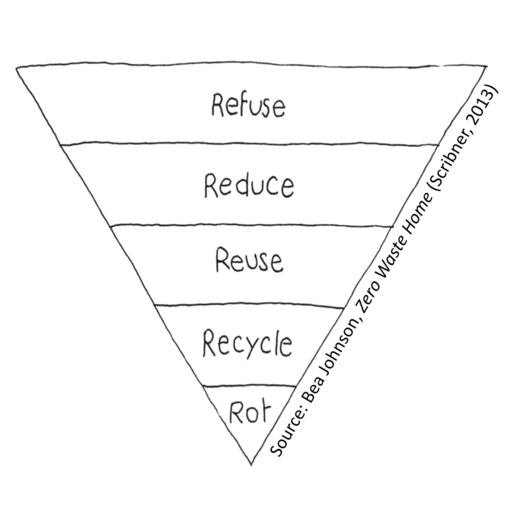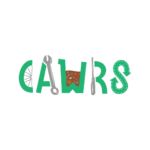Have you ever thrown something into your recycling bin with the thought “I’m not sure it’s recyclable, but let’s hope for the best”? This practice is called wishcycling, putting something in the recycling bin with little knowledge or evidence that it can be recycled.
Although most wishcycling is done with good intentions – and let’s face it, a little bit of misinformation – it is actually a big problem in Australia. From 5 to 31% of the waste collected by councils is not recyclable and needs to be diverted to landfill (Sustainability Victoria, 2022).

“When I first came to Australia, whenever I wasn’t sure if something could be recycled or not, I would throw it in the recycling bin, assuming that it was better than sending it straight to the landfill.
Just recently, I learned that recycling facilities in Australia use machines to sort out waste, and contamination is a huge issue in the country.”
– Carol P.
What is the problem with wishcycling?
Contamination of our curbside recycling bins can clog sorting machines, attract unwanted pests, harm recycling workers, reduce the quality of recycled materials and, in some cases, even force a full batch of otherwise recyclable waste to be sent to landfill.
Overall, it increases the costs of recycling, making it harder for councils to maintain and expand their recycling programs.
While it might not be obvious, the right thing to do is to follow the mantra If in doubt, leave it out!
Most common misplaced items
Research funded by Sustainability Victoria showed that the most common contaminants in Victorians’ recycling bins are things that can be mistaken for their recyclable analogues (e.g. waxed cardboard vs corrugated cardboard). This reveals the importance of spreading clear and accessible information about recycling.
Most common contaminants
- Waxed cardboard (3.81%)
- Soft Plastics (0.68%)
- Aerosol cans (0.53%)
- Electrical items (0.43%)
- Styrofoam (0.39%)
- Plastic bags (0.39%)
- Broken glass (0.34%)
- Food scraps (0.34%)
Source: Kantar / Sustainability Victoria, 2021
How to stop wishcycling
The first thing to do is understand that while recycling is important, it is not the only thing you can do to reduce waste. In fact, it should come as our fourth priority after refusing, reducing, and reusing. This framing helps us feel less guilty about throwing something that we are unsure about in the general bin.

That said, there are easy ways to get more information about how to recycle correctly, so you can finally stop wishcycling.
We recommend taking small steps, one at a time, to avoid overwhelm and guarantee that you are adopting sustainable practices for the long run.
- Go to your local council website and check out what can go in the bin where you live – what is accepted by councils can vary slightly from place to place. It might be clever to print (or get from council) an information flyer and stick it the closest to your bins as possible.
- Remember to dispose of your recyclables loose (without a bag) and CLEAN (clean enough that they could be reused for other purposes).
- Research things that can be recyclable but are not accepted in your council’s program. It might be possible to take them to alternative drop-off points or organise a paid collection from specialised organisations. Good places to look for are Recycling Near You and Recycle Mate.
- Start collecting those items in a designated box in your household, starting with the ones you get more often (for example, bread tags) and label the box with the closest collection point, so you don’t forget.
- For small items like batteries (protected with tape) or print cartridges, it’s ok to save them for around six months before dropping them off.
- Talk to your friends or neighbours about potentially discarding these items together, rotating the responsibility of who drops them off each time. Not only this saves you time and resources but can be a motivating factor, as it will feel good to see that much waste being diverted from landfill.


